This article was co-authored by Monica Morris. Monica Morris is an ACE (American Council on Exercise) Certified Personal Trainer based in the San Francisco Bay Area. With over 15 years of fitness training experience, Monica started her own physical training practice and gained her ACE Certification in 2017. Her workouts emphasize proper warm-ups, cool-downs, and stretching techniques.
There are 9 references cited in this article, which can be found at the bottom of the page.
This article has been viewed 259,148 times.
Stress is ubiquitous in modern society and negatively impacts people in many ways, including their musculoskeletal systems. Stress has been known to increase muscle tension, change blood pressure and impact the release of a variety of hormones and neurotransmitters. Walking is a simple, natural, and inexpensive way to combat stress, although it might lead to tension or discomfort in your legs — especially if you're not accustomed to it. There are many ways to soothe your legs, either at home or via the hands of healthcare professionals.
Steps
Soothing Your Legs at Home
-
1Elevate your legs while resting. One reason legs get sore is because of overuse and swelling. Raising your feet while relaxing at home will help to negate gravity and allow blood and lymph fluid to exit the lower legs and return into circulation.
- Taking your socks off will also help to reduce swelling, thus soothing them even further.
- Raising your legs at or above your heart level is good for promoting circulation.
- Use soft pillows to elevate your legs while laying on the sofa, but don't hamper blood flow by crossing your legs or ankles.
-
2Consider a warm bath. Soaking your legs in a warm bath can significantly reduce pain and swelling, especially if the pain is caused by muscle tension. Don't make the water too hot (to prevent scalding), but make it as warm as is tolerable.
- You can try putting epsom salt in the bath, but there is little evidence for its effectiveness for muscle soreness.
- Always remember to dry your feet thoroughly after a bath so as to prevent slips and falls.
Advertisement -
3Do some leg stretches. If you're walking long distances, maybe the stress in your legs is due to muscle strain. Mild muscle strains respond well to some light stretching because it relieves muscle tension and promotes blood flow.[1] The three main muscles groups to focus on are your calves, quadriceps, and hamstrings. In general, hold stretches (without bouncing) for about 30 seconds. Do these three to five times daily, until the discomfort in your legs decreases.[2]
- For a quad stretch while standing, brace yourself against a wall, flex your knee, and try to pull your foot such that your heel touches your buttocks.
- For a hamstring stretch while standing, bend over at the waist and try to touch your toes.
- Warming up and stretching your leg muscles prior to walking or any athletic activity may help prevent injuries such as strains, sprains, and muscle cramps.[3]
-
4Take medications. Non-steroidal anti-inflammatories (NSAIDs) such as ibuprofen or aspirin are short-term solutions to help you deal with tension, pain or inflammation in your legs. Keep in mind that these medications can be hard on your stomach, kidneys and liver, so it's best not to use them for more than two weeks on a constant basis.
- Dosage for adults is usually 200–400 mg, by mouth, every four to six hours.
- Alternatively, you can try over-the-counter analgesics such as acetaminophen (Tylenol) to soothe your legs, but never take them along with NSAIDs.
- Be careful not to take medications on an empty stomach, as they can increase the risk of ulcers.
-
5Change your shoes. Ill-fitting and/or excessively heavy shoes also contribute to tired and sore legs. As such, wear stable, lightweight footwear that suits your job, sport or activity. Aim for no more than a 1⁄2 inch (1.3 cm) heel. High heels crowd the toes and create more tension in the calf muscles and Achilles tendons. If you're a serious runner, replace your shoes every 350–500 miles (560–800 km) or three months, whichever comes first.
- Remember to always tie your shoes tightly, because loose shoes or flip-flops puts more strain on your lower leg muscles.
- Minor leg injuries such as shin splints are often caused by walking (or running) uphill, on uneven terrain or on hard surfaces such as asphalt or concrete.[4] As such, alter your course and change the type of surface you walk on — switch to grass or dirt, for example.
-
6Lose weight. Weight loss helps prevent a variety of musculoskeletal problems as there's less pressure put on the bones and muscles of the feet and lower legs. For most women, consuming less than 2,000 calories daily will lead to some weight loss every week even if you're only a light exerciser. Most men will lose weight at under 2,200 calories daily.[5]
- Switch to lean meats and fish, whole grains, fresh produce and lots of water for the best weight loss results.
- Many overweight people have flat feet and tend to over-pronate their ankles, so choosing shoes with excellent arch support is crucial.
Receiving Alternative Treatments
-
1Get a leg massage. Get a massage therapist to give you a thorough leg massage, focusing on the calves, shins, quads, and hamstrings. Massage reduces muscle tension and inflammation, helps break down scar tissue and promotes better blood flow.[6] The therapist should start near the inner thighs, work his way down the leg, and then back up the leg to properly remove lymph.
-
2Get some orthotics made. If you have flat feet or shin splints and spend lots of time standing or walking then consider a pair of orthotics. Orthotics are customized shoe inserts that support the arch of your foot and promote better biomechanics while standing, walking and running, which helps prevent stress and tension from building up in your leg muscles.[7] Orthotics will also help reduce the risk of problems developing in joints such as the ankles, knees, and hips.
- As an alternative to customized orthotics, consider a pair of off-the-shelf orthopedic shoe insoles — they're considerably less expensive and may provide quick relief.
-
3Seek out physiotherapy. A physical therapist can show you specific and tailored stretches and strengthening exercises for your legs, and if need be, treat your sore muscles with electrotherapy such as therapeutic ultrasound or electronic muscle stimulation.[8] A physical therapist can also develop an exercise routine / program that will help you lose weight, which is helpful for stress reduction.
- Physiotherapy is often required two to three times per week for four to six weeks to positively impact musculoskeletal problems.
- Good strengthening exercises for your legs, aside from walking, include cycling, rollerblading, beach volleyball, swimming, and weight training.
Troubleshooting Complications
-
1See a medical specialist. Medical specialists may be needed to rule out the most serious causes of chronic leg problems, such as diabetic neuropathy, venous insufficiency (leaky vein valves of the lower leg), stress fracture of the tibia, infections, bone cancer, chronic compartment syndrome (swelling of the lower leg muscles), or popliteal artery entrapment.[9] These conditions are obviously not common causes of tired and sore legs, but if home care and conservative therapies are not effective for soothing your legs, then more serious problems need to be considered.
- X-rays, bone scans, MRI, CT scans, diagnostic ultrasound and nerve conductance studies are diagnostic tests and modalities that specialists may use to help diagnose your leg issue.
- Your doctor may also send you for a blood test to rule out diabetes, inflammatory arthritis or a bone infection.
- You may be given compression socks to wear if the veins in your lower legs are weak or leaky.
-
2See a mental health professional. If the stress is too great in your life and it's causing musculoskeletal and/or emotional problems, then talk with a mental health professional. Aside from helping with stress, anxiety and depression, cognitive-behavioral therapy can also help with musculoskeletal pain.[10]
- Mental health professionals sometimes recommend mood altering medications such as antidepressants, which can also impact the musculoskeletal system.
- More natural stress-relieving practices include meditation, yoga, tai chi, and deep breathing exercises.
Expert Q&A
Did you know you can get expert answers for this article?
Unlock expert answers by supporting wikiHow
-
QuestionIs warming up before working out good?
 Monica MorrisMonica Morris is an ACE (American Council on Exercise) Certified Personal Trainer based in the San Francisco Bay Area. With over 15 years of fitness training experience, Monica started her own physical training practice and gained her ACE Certification in 2017. Her workouts emphasize proper warm-ups, cool-downs, and stretching techniques.
Monica MorrisMonica Morris is an ACE (American Council on Exercise) Certified Personal Trainer based in the San Francisco Bay Area. With over 15 years of fitness training experience, Monica started her own physical training practice and gained her ACE Certification in 2017. Her workouts emphasize proper warm-ups, cool-downs, and stretching techniques.
ACE Certified Personal Trainer Yes! It helps decrease the odds of an injury and makes it much easier for your body to adjust to the exercise you're doing. Start with static stretches, move on to more dynamic stretches, then get some full-body cardio in for 5-10 minutes before working out. You should be slightly out of breath by the time you start.
Yes! It helps decrease the odds of an injury and makes it much easier for your body to adjust to the exercise you're doing. Start with static stretches, move on to more dynamic stretches, then get some full-body cardio in for 5-10 minutes before working out. You should be slightly out of breath by the time you start.
References
- ↑ http://www.mayoclinic.org/healthy-lifestyle/fitness/in-depth/stretching/art-20047931
- ↑ Monica Morris. Certified Personal Trainer. Expert Interview. 18 November 2019.
- ↑ http://www.mayoclinic.org/healthy-lifestyle/fitness/in-depth/stretching/art-20047931
- ↑ https://www.mayoclinic.org/diseases-conditions/shin-splints/symptoms-causes/syc-20354105
- ↑ http://www.healthline.com/health/lose-weight-calories#Guidelines2
- ↑ http://www.mayoclinic.org/healthy-lifestyle/stress-management/in-depth/massage/art-20045743
- ↑ http://www.footvitals.com/health/orthotics.html
- ↑ http://www.nhs.uk/conditions/Physiotherapy/Pages/Introduction.aspx
- ↑ http://www.mayoclinic.org/symptoms/leg-pain/basics/causes/sym-20050784
About This Article
To soothe your legs after a stressful event or a long walk, use cushions or pillows to elevate them in order to reduce any swelling. You can also try doing some leg stretches, like bending over at the waist and trying to touch your toes, to relieve muscle tension. Alternatively, take a bath with lukewarm water and Epsom salt, since Epsom salt is known to help reduce swelling and muscle aches. Additionally, consider taking an over-the-counter painkiller, like aspirin, to help deal with any pain or inflammation. For more advice, like how to exercise and eat healthy in order to reduce pain in your legs, keep reading.
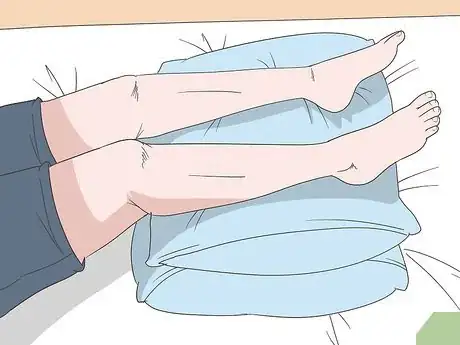

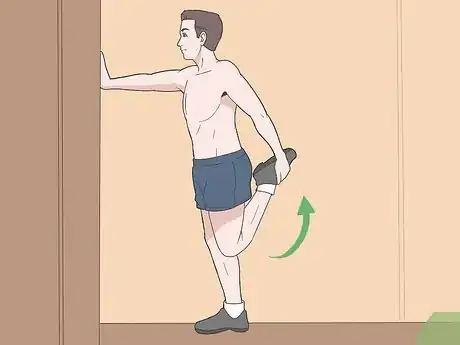

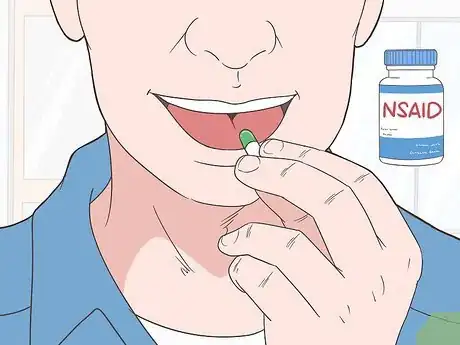
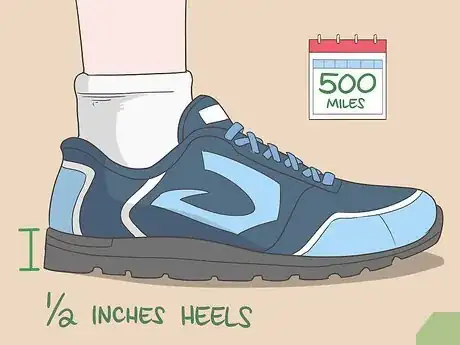
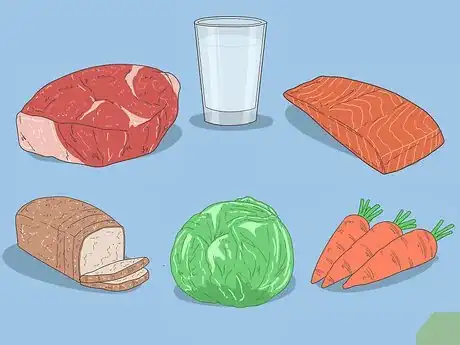
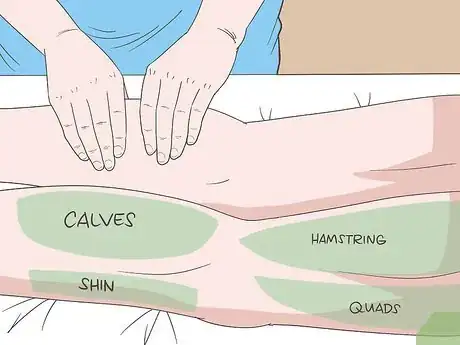
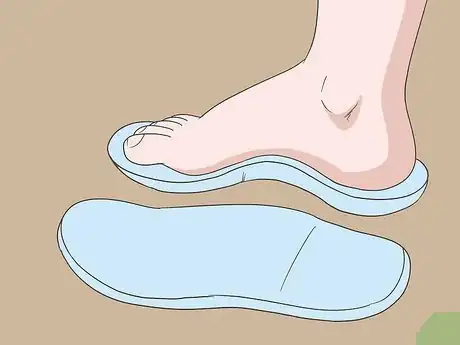
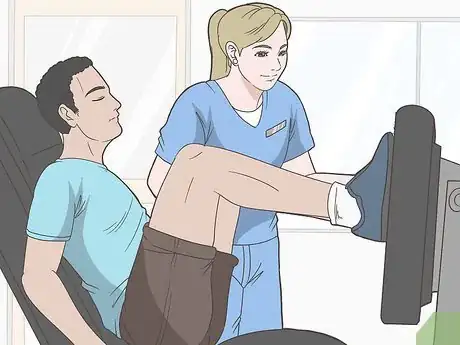



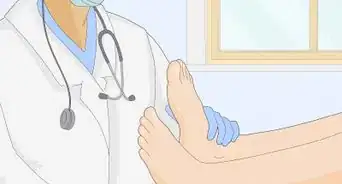




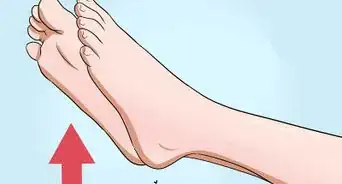
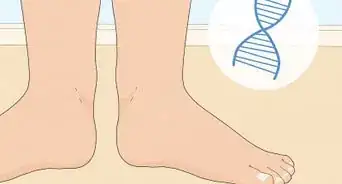

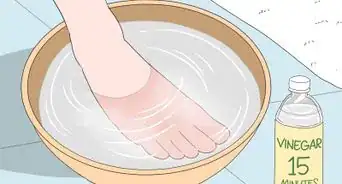










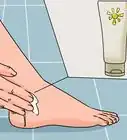
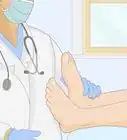





































Medical Disclaimer
The content of this article is not intended to be a substitute for professional medical advice, examination, diagnosis, or treatment. You should always contact your doctor or other qualified healthcare professional before starting, changing, or stopping any kind of health treatment.
Read More...